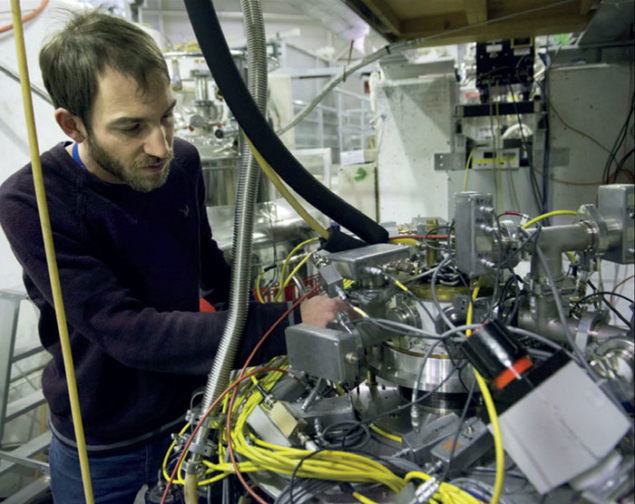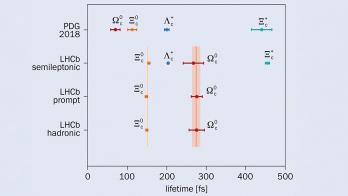
The Antihydrogen TRAP (ATRAP) experiment at CERN’s Antiproton Decelerator has reported a new measurement of the antiproton’s magnetic moment made with an unprecedented uncertainty of 4.4 parts per million (ppm) – a result that is 680 times more precise than previous measurements. The unusual increase in precision results from the experiment’s ability to trap individual protons and antiprotons, as well as from using a large magnetic gradient to gain sensitivity to the tiny magnetic moment.
By applying its single particle approach to the study of antiprotons, the ATRAP experiment has been able make precise measurements of the charge, mass and magnetic moment of the antiproton. Using a Penning trap, the antiproton is suspended at the centre of an iron ring-electrode that is sandwiched between copper electrodes. Thermal contact with liquid helium keeps the electrodes at 4.2 K, providing a nearly perfect vacuum that eliminates the stray matter atoms that could otherwise annihilate the antiproton. Static and oscillating voltages applied to the electrodes allow the antiproton to be manipulated and its properties to be measured.
The result is part of an attempt to understand the matter–antimatter imbalance of the universe. In particular, a comparison of the antiproton’s magnetic moment with that of the proton, tests the Standard Model and its CPT theorem at high precision. The ATRAP team found that the magnetic moments of the antiproton and proton are “exactly opposite”: equal in strength but opposite in direction with respect to the particle spins and consistent with the prediction of the Standard Model and the CPT theorem to 5 parts per million.
However, the potential for much greater measurement precision puts ATRAP in position to test the Standard Model prediction much more stringently. Combining the single particle methods with new quantum methods that make it possible to observe individual antiproton spin flips should make it feasible to compare an antiproton and a proton to 1 part per billion or better.
Further reading
J DiSciacca et al. 2013 Phys. Rev. Lett. 110 130801.








